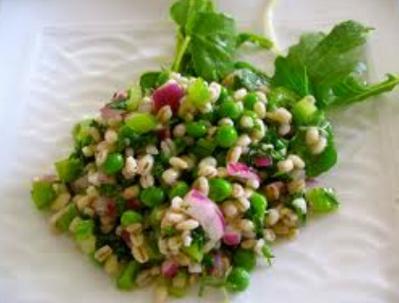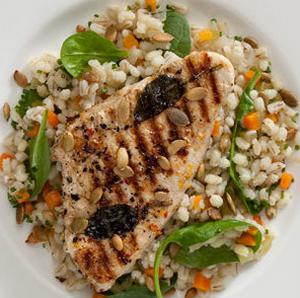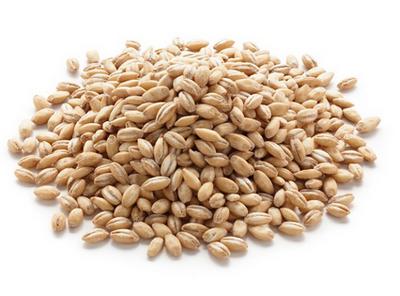Barley is a cereal made from barley. It is associated with porridge and soup (some with the army), and rhymes with bombardment, a warhead, but cooking and dosage are also suitable. Nowadays, this product may not be the most popular, but undoubtedly one of the most useful. Since you are reading about healthy foods, you may be interested in calorie barley. We are happy to inform you of this important information, but everything has its time. Let's start in order.

History tour
In the distant pre-Petrine times, and to be cunning, long before the invasion of Batu in Russia , barley was very popular. True, pearl barley dishes were not prepared then. For the preparation of cereals, crushed barley called barley groats was used. Barley has many useful substances (but more on that later), fiber and, accordingly, “slow” carbohydrates. Their assimilation took place very gradually (and, as a rule, was accompanied by flatulence), which contributed to a long-lasting feeling of satiety, gave strength and provided the power of the Russian spirit. Actually, barley appeared much later, when they learned to grind whole barley grains. Even the name of pearl barley has become a kind of marketing ploy. There are many benefits, but they are not buying very actively, and so the visual similarity with river pearls - pearls - was used.

Modern application
Nowadays, when an awn is chopped off from barley grain and six layers are removed by grinding, the final product is called pearl barley. Croup is used for making cereals, soups and toppings. If you bought pearl barley, but after some time, having gone through thorny empirical experience, you found out that you do not like it, do not rush to throw out cereals: pearl barley is an excellent bait for fish. You go fishing, right? Pearl barley calories are indifferent to fish, but the taste, shape and elasticity make you temporarily forget about the insidiousness of surface inhabitants.
Composition and properties
Pearl barley contains a fair amount of carbohydrates (about 70%), a certain amount of protein (more than 9%), but how much fat will be there depends mainly on the cook. There are fewer vitamins in it than in whole barley, but niacin, thiamine and riboflavin are still present. But with minerals - a complete order, and in some respects even more than other cereals in an adjacent jar. There is a lot of magnesium (94 mg / 100 g), a lot of potassium (172 mg / 100 g), and more phosphorus than competitors (323 mg / 100 g). And a whole handful of amino acids, including the essential ones: lysine, methionine, tryptophan. Pearl barley is nutritious, its use permanently relieves hunger. It is good as a dietary dish, and in this case, it is not so much the calorie content of pearl barley that is important as the fact that the decoction of it has enveloping properties. This allows you to resist inflammatory diseases of the stomach and intestines.

Army diet (from the memories of the military)
As already mentioned, barley contains many useful substances, including the amino acid - lysine, which is involved in the production of collagen, thereby minimizing wrinkles. This, and not only about the calorie content of pearl barley, was probably known by one army chief food officer, ensign ... (I can’t indicate my last name, so as not to give out military secrets). Comrade Warrant Officer, taking care of the fighting spirit, health and well-fed appearance of the personnel, daily included barley in the diet of fighters. He motivated it invariably by the fact that soldiers should not have wrinkles ... anywhere. In fairness, it should be said that sauerkraut, which affects the improvement of memory, was also included in their daily diet, but you will read about it in another article.
Promised revelation
I remember that you were interested in how many calories are in pearl barley, and we promised to lift the veil over this mystery. Well, if you please: 100 grams of cereal correspond to 320 kcal. A lot of? So it’s in raw cereals! If you boil it, there will be only 121 kcal. Hearty, cheap and cheerful. But the benefits, the benefits are much greater! The exact value we will indicate after the approval of the unit of measure of benefit.